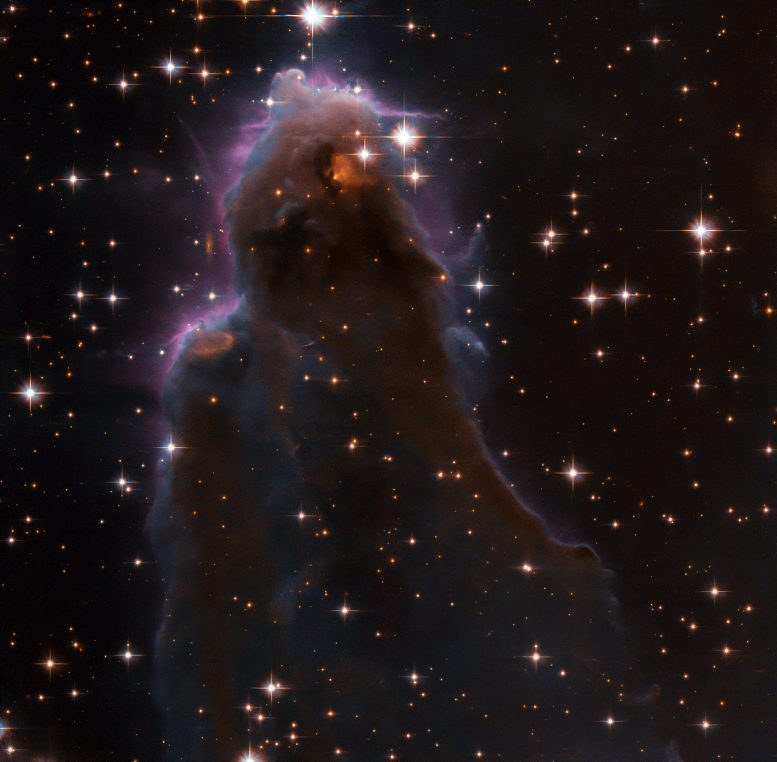
J025157.5+600606 is a special class of star-forming nursery known as Free-floating Evaporating Gaseous Globules. Credit: ESA/Hubble & NASA, R. Sahai
This image, taken with the NASA/ESA Hubble Space Telescope, depicts a special class of star-forming nursery known as Free-floating Evaporating Gaseous Globules, or frEGGs for short. This object is formally known as J025157.5+600606.
When a massive new star starts to shine while still within the cool molecular cloud from which it formed, its energetic radiation can ionize the cloud’s hydrogen and create a large, hot bubble of ionized gas.
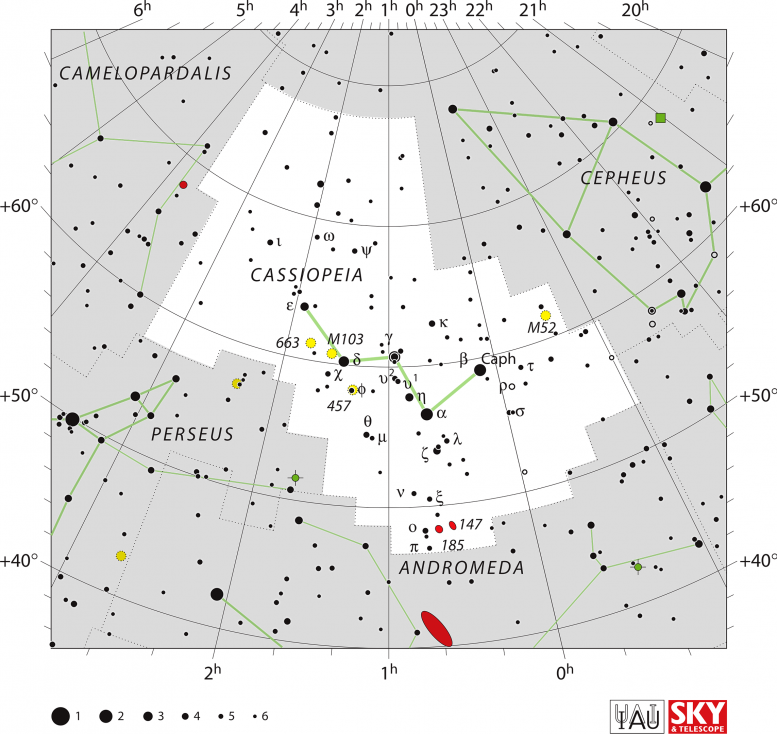
IAU Cassiopeia chart. Credit: IAU and Sky & Telescope magazine (Roger Sinnott & Rick Fienberg) CC BY 3.0
Amazingly, located within this bubble of hot gas around a nearby massive star are the frEGGs: dark compact globules of dust and gas, some of which are giving birth to low-mass stars. The boundary between the cool, dusty frEGG and the hot gas bubble is seen as the glowing purple/blue edges in this fascinating image.
In July 2020, a previous ESA/Hubble Picture of the Week, of J025027.7+600849, featured another frEEG.

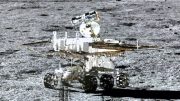
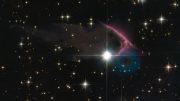
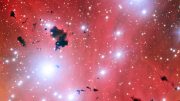
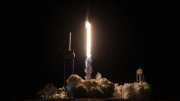
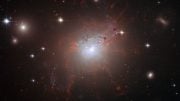
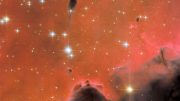
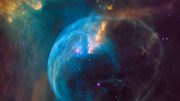
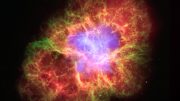
Be the first to comment on "Hubble Space Telescope Captures a frEGGS-Plosion of Star Formation"